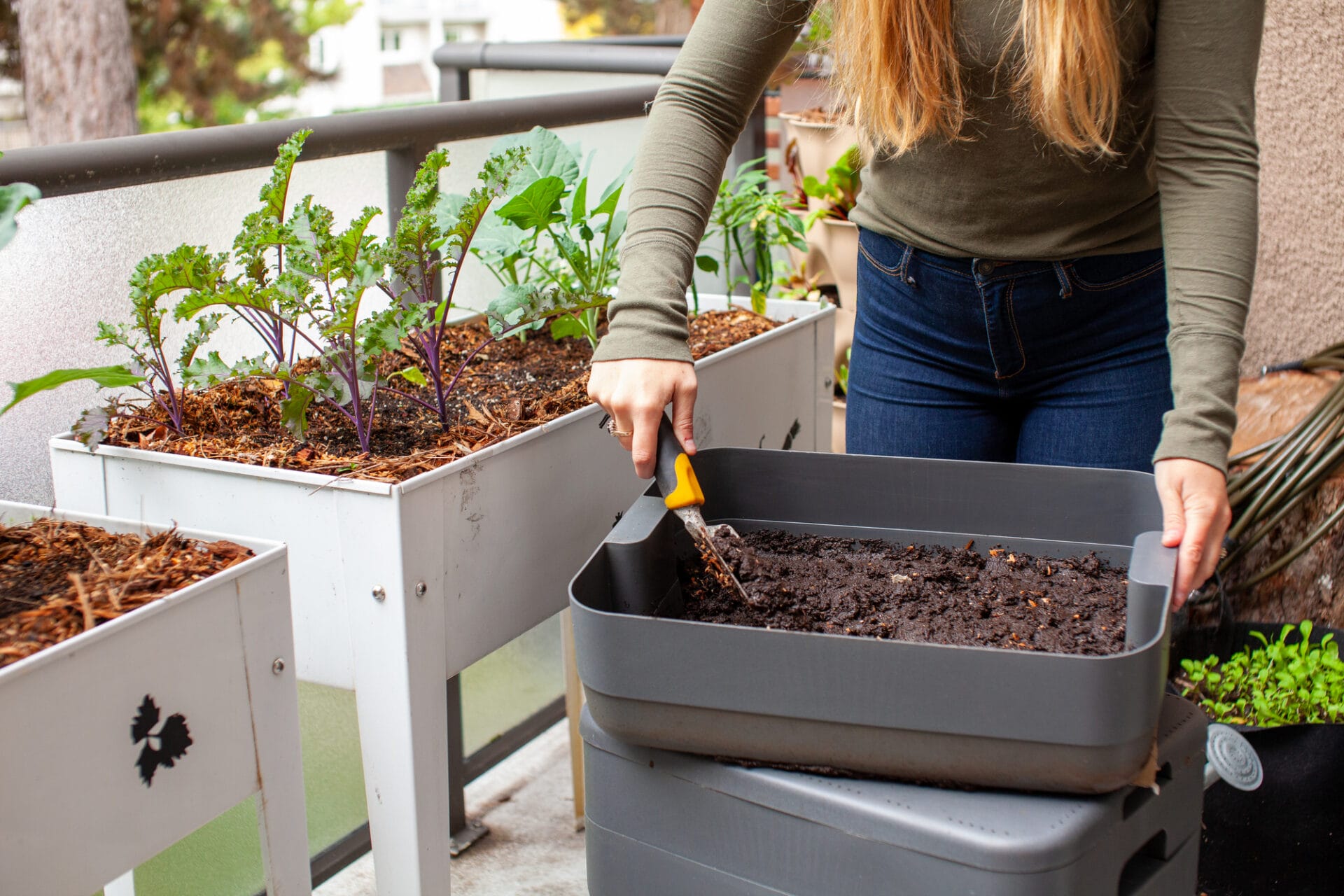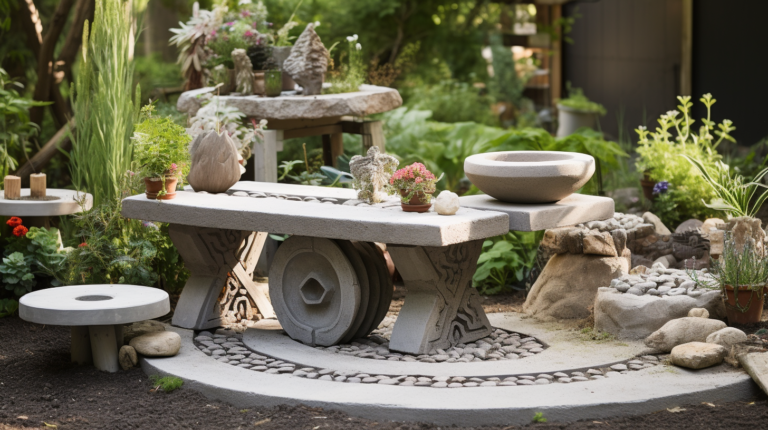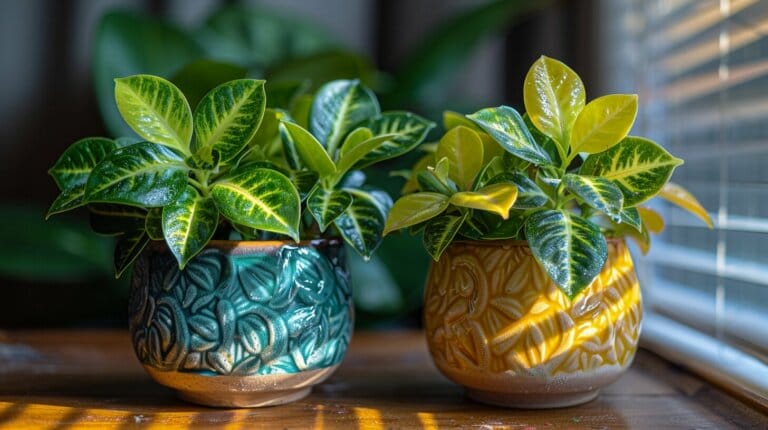Discovering the optimal indoor worm composter could entirely transform your composting routine. It functions more swiftly than conventional composters, is simpler to manage, emits very little odor, and above all, it is exceptionally convenient.
But space can be quite an issue if you don’t have a good outdoor area to put your composter, especially if it starts smelling. No one wants their living room smelling like garbage, right?
That’s where this guide comes in. We’ve rounded up the best six indoor worm composters that, with the right care, are perfect for odor management.
We also included some of the top tips and tricks to keep your worm farm healthy and fresh. Scroll through to find out how they compare!
How Do Indoor Worm Composting Bins Work?
If you’ve landed on this post, then you probably already have a general idea about how composters work, so we’ll focus on indoor ones.
Indoor worm composting is pretty straightforward. The only difference is that the manufacturers of our top picks paid extra attention to making it well-ventilated, appealing enough for your living room or kitchen, and super easy to use.
Indoor bins often come with multiple trays or layers, making it easier to separate the fresh scraps from the finished compost without a mess. Plus, most of them are designed to manage moisture better, reducing the chances of unwanted smells.
Compared to outdoor ones, indoor composters are more compact and come with lids to keep things contained and critter-free. And, since they’re indoors, you don’t have to worry about extreme temperatures slowing down the composting process.
Our Top Selection
- FCMP Outdoor - The Essential Living Composter, 2-Tray Worm... – Best Overall
- No products found. – Best Classic Worm Farm
- Maze Worm Farm – Best Size and Value-For-Money
- Biovessel - Eco Living Composter Powered by Food Waste – Best Aesthetic
- Urbalive Indoor Worm Farm - Organic Compost Vermicomposter,... – Easiest to Use
- The Original Vermihut ® Plus 5 – Tray Worm Composter... – Best for Experienced Worm Farmers
Best Indoor Worm Composter Bins to Use at Home in 2023
Now, let’s dive into our curated list of top indoor worm composter bins that combine efficiency, ease of use, and a no-mess design, perfect for turning kitchen scraps into garden gold.
1. FCMP Essential Living Composter – Best Overall
- Harness The Power of the Worm – Worm composters (vermicomposters) are an easy and efficient way to quickly compost a variety of food and other scraps found around the home. The resulting worm…
- Year-Round Indoor Use – The speed and efficiency of the vermicomposting process keeps typical composing odor to a minimum and allows the unit to be kept inside and used year-round.
- Happy Worms Are Productive Worms – 1) The MOISTURE CONTROL WATER RETENTION CHANNEL running around the outside of each tray collects water to prevent the bedding from drying out along the edges. 2) A…
- Worm Tea – The liquid collected in the reservoir base is known as “Worm Tea.” Mix 1 part “tea” with 1 part water to create an excellent fertilizer for plants.
- Durable Construction – BPA free, UV-inhibited recycled polypropylene
The Essential Living stacked worm composter is one of the most popular vermicomposters on the market today, and for good reason.
It’s made up of a base that has a worm tea or leachate spigot, a drainage layer to isolate excess moisture, two trays, and a lid that can double as a little table.
This worm composter comes in gray, black, plum, and bright green. That, along with its understated simple design, makes this worm bin blend in perfectly in any urban home.
Pros
- The design, colors, height, and even the flat lid make it look really good wherever you place it
- Since it’s made out of plastic, it’s easy to move around (when it’s not full to the brim with compost and red wigglers)
Cons
- It doesn’t have a mesh filter, which means larger particles can clog the spigot, and yup, some worms might literally drown in the sauce
- Minimal ventilation, which means you need to be extra diligent in keeping it aerated
2. Tumbleweed Can-O-Worms – Best Classic Worm Farm
No products found.
Tumbleweed Can-O-Worms is true to its name, both in form and function. It’s yet another stackable system, but its black cylindrical shape means you can match it with your kitchen’s garbage can.
That’s great for visual consistency, but it does make any work on your worm farm a bit awkward. It’s not high enough to do it comfortably while standing, nor short enough to simply crouch down next to it.
Pros
- This bin is a classic worm farm loved by home gardeners for over a decade
- Its cylindrical design brings to mind the good ol’ American trash can we all know, which creates a visual harmony when put side by side
Cons
- Reviews are mixed on how sturdy its plastic is. Some folks found the feet and trays gave way too soon, while others swear they’ve been going strong for nearly a decade, so it seems you need to be gentle with it
- Extra trays will likely cost you almost double compared to what other brands charge
3. Maze Worm Farm – Best Size and Value-For-Money
- 2 x Working Trays, Lid, Base, Worm-Saver Tray, Liquid Collection Tray & Coconut Peat
- Optimal airflow for worms
- 2 working trays to rotate when full
- Easy sliding worm-saver tray
- Liquid collection tray
This farm’s biggest selling point is its size. The Maze Worm Farm is tiny and short, making it perfect for a countertop placement. Even its trays are almost half as thick as most of the other worm bins on this list.
This makes it extra easy to handle for someone who might not have the physical ability to lift heavy trays. Add to that its black and green sleek design and the possibility of raising it with wooden legs, and you’ve got an all-rounder.
Pros
- This bin is arguably the best size you can hope for; it comfortably fits on countertops, offering ample space for your wormy friends without being bulky
- The Maze is one of our top value-for-money choices
Cons
- If your compost game is strong and you’ve got heaps to process, this will be restrictive. It only holds 4 gallons, which is barely enough to process food scraps from a household of two
- While it comes with a drainage hole, the absence of a spigot means you’ll need a tray underneath to catch any excess water
4. Biovessel Eco Living Composter – Best Aesthetic
To be fair, this miniature worm composter isn’t going to help you make better use of your food waste or create that much compost at all as much as it’ll be a great conversation starter and an extravagant pot.
The Biovessel Eco Living Composter has one compartment with three openings: one to put the food waste, a small one to “monitor” according to its manufacturer, and the last one to harvest fertilized soil. It also has an opening at the bottom for drainage.
Honestly, this worm bin is more of a statement piece than a proper composter, although it’ll do the job. If your objective is solely to vermicompost, this might not be worth the money.
Pros
- This product’s design is the biggest advantage you get from it. It’s truly on a whole different level from the vast majority of every commercial worm composter you’ll find out there
- It’s less than 9” high and carries under 2 gallons of material in it. That means it can easily be the centerpiece of a coffee table
Cons
- The price tag on this tiny worm composter makes you think it’d be bullet-proof, but it’s not even minimally insulated. The cheap plastic is waiting for any excuse to get warped out of shape, which means the cork lid might not fit it anymore
- The overall aesthetic of this worm bin is immaculate, but the base it rests on is less than a third of its total width, which means that it’s, again, waiting for an excuse to be tipped over
5. Urbalive Worm Farm Compost Bin – Easiest to Use
- Smart kitchen bio waste processing.
- Indoor year-round use.
- Sleek & modern European design and origin.
- Step-by-step instruction guide.
- Great tool for ecological education.
Urbalive Worm Farm seems identical to the Essential Living Composter at first glance, but there are a couple of major differences between them.
For starters, the Urbalive composter is the best on this list in terms of worm tea filtration. It has a sturdy fabric-like mesh filter that fits right into place and keeps everything where it belongs. It works like a dream!
Another difference is the lid. This one comes with a handle and looks a little nicer, but that means that you can’t use it as a side table. Between the two, Urbalive does look fancier because of its neutral chic colors.
Pros
- This composter has a clean design with neutral tones, making it simple but still kind of stylish
- It has a sturdy mesh filter
Cons
- Some reviews mentioned that now and then, you might find a wiggly friend exploring (or drowning) in the lowermost bin
- The light colors this bin comes in aren’t everyone’s cup of tea
6. VermiHut 5-Tray Worm Compost Bin – Best for Experienced Worm Farmers
- We are the original developer of the VermiHut Plus worm compost bin. Lately, a Chinese finanaced company cloned our design and made the black color. Please support the America design and say “No” to…
- The advanced version of worm compost bin, it comes with standard 5 trays, additional trays can be added.A new component named M-board to increase air-flow for better compost efficiency and save worms
- A new component named V-board and a piece of coconut fiber are built in the air-vented lid odor removal, moisture control
- A set of “shoes” is included to prevent other invading to the bin, base and liquid tray form into one piece to eliminate part assembly
- Worm compost accessories including a piece of coconut coir, a piece of claw, a piece of scraper, a piece of liquid collection cup, and a piece of worm food magnet.
Our list wouldn’t be complete without the VermiHut 5-Tray. After all, VermiTek is one of the most well-known names in the world of worm composters.
The VermiHut worm composter’s compact design can snugly fit under many kitchen sinks, making it ideal for urbanites with limited space. This is another stackable tray system with a leachate spigot, but it does have some design flaws.
Pros
- It comes equipped with a screen that effectively keeps larger chunks from seeping into the drainage layer
- The bin comes with water trays that fit its feet perfectly, acting as a moat to keep ants and other unwanted visitors at bay
Cons
- While the material is functional, it can become brittle over prolonged exposure to direct sunlight
- The trays stack directly on top of each other, lacking any ridges or seams. This can compact the material, making maintenance more challenging and reducing the airflow vital for compost health
Bonus: DIY Indoor Worm Composter Bin
We’re throwing a curveball with this one, but hear us out.
Going the DIY route isn’t as daunting as you might imagine, especially if you’ve got a crafty streak. There’s also a solid chance you won’t need to buy anything you don’t already have in your garage.
Besides, for the price of some of the bins in our list, you may be able to have a composter tailored precisely to your space.
Setting Up Your Indoor Worm Farm: A Step-By-Step Guide
If you’ve chosen your worm bin and are ready to set it up, congratulations on taking the eco-friendly step toward worm composting! Follow this step-by-step guide to ensure a thriving worm farm.
Step 1: Gather Carbon-rich Materials
Carbon-rich materials, or “browns” as they’re often termed in the worm composting circles, are foundational for your worm bedding.
Start by collecting materials like shredded newspapers, torn cardboard, brown leaves, torn-up egg cartons, garden soil, or coconut coir. You’ll want to avoid anything with colored prints or glossy finishes.
Layer them into your tray, then lightly dampen them with water so they feel moist but not soaking wet.
The bedding should be akin to the consistency of a wrung-out sponge, so ensure the dampened carbon-rich materials are mixed well to achieve this. In your worm bin, create a 4-6 inch layer of this moist bedding.
Learn how to prepare your garden soil with the best home garden tillers on our recommended list.
Step 2: Introduce The Wigglers
Now you’ve set the scene for the stars of the show: the red wiggler earthworm. Start with about half a pound of worms for 10-gallon worm bins.
These worms flourish in temperatures between 55°F and 77°F (13°C to 25°C), so keep your worm composting bin in a stable environment.
To introduce them, spread the worms gently over your moist bedding. They’ll initially explore but soon burrow into the bedding.
As they settle in, avoid feeding them new scraps for about a week. This gives them time to acclimatize, ensuring a robust start in their composting journey.
Step 3: Feed Your Worms
A well-fed worm is a happy worm, but moderation is key. After giving your worms about a week to adjust to their new surroundings, it’s feeding time.
Stick to non-citrus fruit and vegetable scraps, and it’s a good idea to cut or tear these scraps into smaller pieces, as it aids in faster decomposition. Meat, dairy, oily foods, and citrus are no-nos.
Aim to feed them once a week by digging a small trench in the bedding, placing your scraps inside, and then covering them back up.
Pro tip: Keep the food on one side to make harvesting worm castings easier.
Start with a modest half a cup to a cup of scraps per week. If you notice the previous week’s food has been consumed within 3-4 days, you can slightly bump up the amount in the subsequent feedings.
Looking for a way to ease your gardening routine? Learn how to complement your composting efforts with self-watering pots.
Tips to Keeping Your Composter Fresh and Breezy
Keeping your worm composting bin odorless can be a bit tricky for beginners. But all you need is just a few tips and habits to build up a healthy and productive worm farm:
- Layer and Bury: Alternate and bury food scraps with carbon-rich materials like shredded newspaper or coir. This accelerates decomposition, which minimizes the chances of things rotting in there
- Stir Occasionally: Giving your compost a gentle mix now and then promotes aeration, which helps reduce unwanted odors
- Mind the Wetness: As we said earlier, your compost should have the moisture of a wrung-out sponge. Drain it, adjust it with bedding material, or sprinkle water to achieve that
- Chop Your Scraps: Smaller bits decompose faster, minimizing the chance of lingering smells
- Avoid Certain Scraps: Stay away from meat, dairy, or oily foods. They can introduce strong odors and are much more likely to attract harmful pests
Comparison Table
Now, let’s compare some of the features to help you choose the best indoor worm composter for your needs.
| Point of Comparison | Capacity | Dimensions | Colors |
| FCMP Outdoor - The Essential Living Composter, 2-Tray Worm... | 6 Gallons | 15″L x 15″W x 22.01″H | Gray, Bright Green, and Plum |
| No products found. | 15 Gallons | 20″L x 20″W x 25.5″H | Coal Black |
| Maze Worm Farm | 4 Gallons | 15″L x 15″W x 11″H | Black and Bright Green |
| Biovessel - Eco Living Composter Powered by Food Waste | 1.8 Gallons | 8.9″L x 17.7″W x 5.9″H | White and cork |
| Urbalive Indoor Worm Farm - Organic Compost Vermicomposter,... | 15 Gallons | 20″L x 15″W x 24″H | Green, Bright Gray, and Beige |
| The Original Vermihut ® Plus 5 – Tray Worm Composter... | 10.5 Gallons | 17″L x 17″W x 33″H | Emerald Green |
Note that these capacities will differ according to how many trays you buy and your own usage.
Wrap Up
We’ve collected the most easy-to-use, indoor-friendly, and odorless worm composters available on the market! Check out the Amazon links we’ve provided for each one to get a better idea.
Whichever you choose to go with, you’ll need to do some reading and go down a YouTube rabbit hole or two to master the art of worm composting.
Last update on 2025-07-09 / Affiliate links / Images from Amazon Product Advertising API












